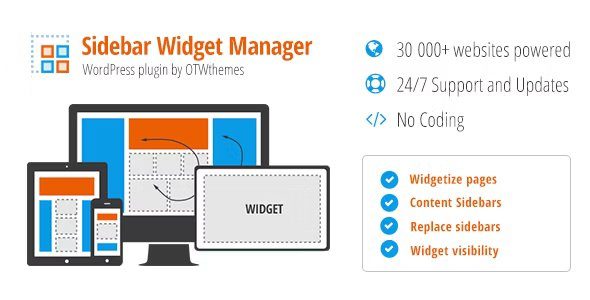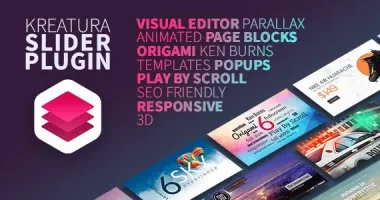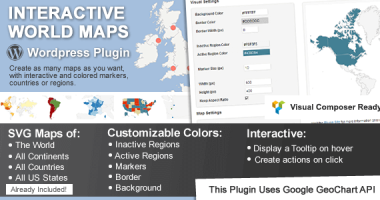Short description
WordPress offers a wide range of customization options for its users, including the addition of sidebars and widgets. These features allow users to create unique mobile-friendly page layouts, adjust the alignment of sidebars vertically or horizontally, and customize the content on various pages. The OTW Grid Manager allows users to create responsive column layouts with just a few clicks, and the WPML plugin supports various plugins and extensions.
Widgets can be positioned vertically or horizontally, and can be stacked one below the other or horizontally. Users can also customize the appearance of sidebars by adding content to them or using the editor’s Insert Sidebar Shortcode button.
Widgets can be selectively shown or hidden based on various criteria, including individual pages, layouts, posts, custom post types, taxonomies, and more. ThemeForest offers content supplements for personalizing pages and articles, allowing for the creation of sidebars on the left and right.
Incorporating sidebars and widgets into themes allows users complete freedom over their appearance, with only author approval and one extended license required. This feature is compatible with standard WordPress widgets and any additional widgets, making it an essential tool for creating mobile-friendly websites.
description
You can do anything you want with the design, the content, the Sidebar & Widget Manager nulled plugin, and the widgets.
Create unique mobile-friendly page layouts simply by adding widgets.
Drop and drag. Use the OTW Grid Manager to quickly create mobile-friendly designs.
Widgets may be aligned vertically or horizontally.
You may switch out the Sidebar & Widget Manager nulled plugin in any theme for something unique on any number of pages.
Your own unlimited sidebars
Widgets and sidebars that stay put
Any widget may be made visible on any page, and vice versa.
Allows for any content type on WordPress service pages (home, front, 404, search, etc.), page templates, pages, posts, categories, tags, archives, custom post types, taxonomies, post type archives, and so on.
Use OTW’s Content Sidebars to insert individualised widget areas into blog entries and webpages.
Use the WPML plugin to show different widgets and sidebars depending on the user’s language.
Support for the WooCommerce extension (woo pages, woo goods, woo categories, woo tags)
bbPress pages, forums, topics, and subject tags are all supported by this plugin.
Help for the BuddyPress add-on, including member and activity feeds
Show customised sidebars and widgets to users in different jobs.
Enhanced functionality for extensive WordPress setups
Made to look and function like the rest of WordPress
Simple and straightforward management
Absolutely no programming skills are necessary.
Designing mobile-friendly websites from scratch: page widgetization
The addition of widgets to sites allows for a great deal of customization. Your lathes will react as you choose. Simple, entertaining, and requiring no code at all!
The number of custom sidebars you may create is up to you.
Start a new sheet.
The OTW Grid Manager makes it easy to create a responsive column layout with just a few clicks.
Update the columns with the new sidebars.
To add content to your new sidebars, visit Appearance > Widgets.
If you’d rather not use widgets, you can just copy the shortcode for the sidebar and put it into a page or post. You may also use the editor’s Insert Sidebar Shortcode button for the same effect.
Learn more about the method, images, and video of widgetizing pages using the OTW Grid Manager.
Alignment of Horizontal and Vertical Widgets
Vertical
By default, WordPress widget alignment looks like this. Widgets in vertically aligned sidebars (widget sections) are stacked one below the other.
Horizontal
Widgets placed in sidebars (widget sections) that are aligned horizontally will appear next to one another. These widget spaces are malleable and fluid. All widgets inside this widget area will share the available width proportionally. Widgetized websites often use horizontal alignment.
Align widgets horizontally or vertically? See screenshots for details.
Modify the theme by adding new sidebars.
Keep your pages up-to-date with important information. Any combination of pages, templates, posts, custom post kinds, taxonomies, etc. may now have a new sidebar (widget area) created in lieu of the old one. Only the pages you choose will have the new sidebar’s content shown in lieu of the one you’re replacing. In addition, you can quickly convert your sidebar into a sticky sidebar, making its contents accessible even as the user scrolls down the page.
Make a personalised widget bar.
Select the widget to swap out.
Specify which pages, templates, articles, custom post kinds, taxonomies, and so on will make use of the bespoke sidebar.
Add some widgets to your new sidebar by navigating to Appearance > Widgets.
Control over the widgets’ display states
Widgets may now be selectively shown or hidden based on a wide variety of criteria, including individual pages, layouts, posts, custom post kinds, taxonomies, and more. It is compatible with the standard WordPress widgets as well as any additional widgets.
Select widgets under appearance.
The Set Visibility button is included on every widget.
You may choose which screens to show or hide the widget from.
Content Supplements on OWT
You may personalise your pages and articles by adding sidebars on the left and right. Full-width page layouts are ideal for this. If your theme doesn’t have a suitable template, we can provide one.
All pages may share the same content sidebars, or they can be customised separately.
These widgets are simple to create. The content of the sidebars remains visible regardless of how far down the page the user scrolls.
Insert a widget into a page’s layout file.
It’s not completely straightforward since some familiarity with coding is required. Add a sidebar by using the do_shortcode function in WordPress and inserting the shortcode of the sidebar you want to use.
Those of you who create themes for ThemeForest
Incorporate this feature into your themes to allow users complete freedom over the appearance of sidebars and widgets. All you need is author approval, which you may receive by emailing us, and one extended licence for each theme you sell. http://themeforest.net/user/OTWthemes#contact
Related Products
The Best Products
Product Info
version
Updated Date
Released on
Developer Name
Category
There is a problem ?














